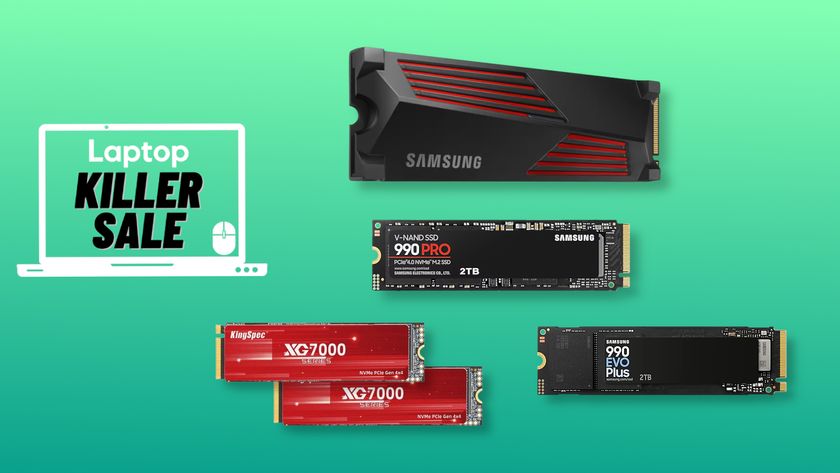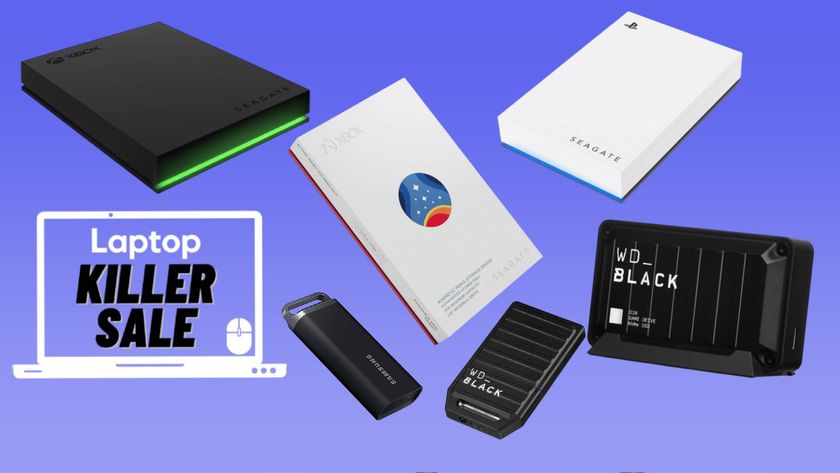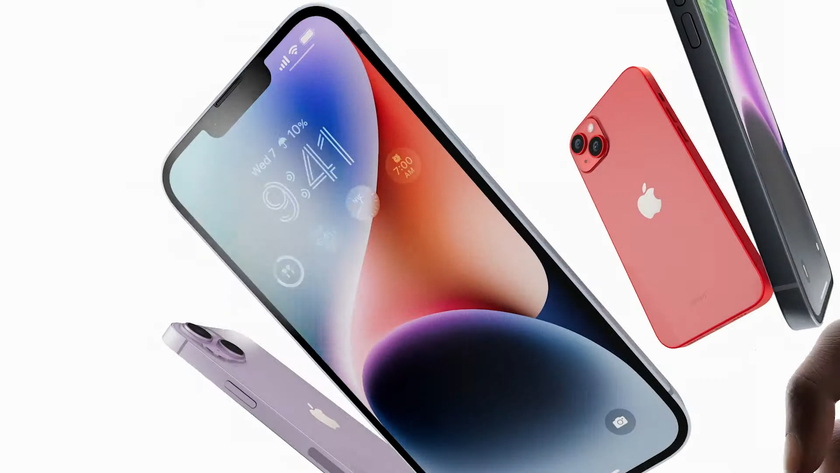iXpand Flash Drive Frees Up Space on Your iOS Device
Your iPad or iPhone is the digital equivalent to the hallway closet in your home. When you toss Live Photos that are twice as large as normal pictures on top of all the dusty videos, apps, music files and movies, suddenly that 16GB of onboard storage just doesn't cut it.
It's time to haul that stuff out from the digital closet and into a digital garage. SanDisk's iXpand flash drive wants to be that garage.
MORE: 5 Easy Ways to Free Up Storage Space on Your iPhone
Design
Starting at $49 for 16GB of alternative storage, the petite iXpand thumb drive has two ports on its opposite ends: a USB 3.0 port for swapping files to or from PCs and a lightning port to plug into your iPad or iPhone. The middle looks more or less like an average thumb drive.
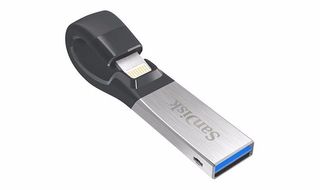
The plug-and-save iXpand comes in several sizes: 16GB for $49, 32GB for $69, 64GB for $90 and 128GB for $129. Once you settle on the amount of space your accumulated clutter demands, the next concern is setting up the iXpand.
Setup
Stay in the know with Laptop Mag
Get our in-depth reviews, helpful tips, great deals, and the biggest news stories delivered to your inbox.
You'll want to download the iXpand Sync app. It features clear-cut file management that backs up new media the second it's saved to your iDevice. The free app lets you play video files, create playlists out of stored music and snap pictures, all within the iXpand Sync app. Plus, you can shelter files behind password-protected safe folders.
From the app, you follow prompts to create a backup of all your photos, video and media files. Next, the app asks if you'd like to delete the original files, leaving your device's storage locker free, clear and open for new content.
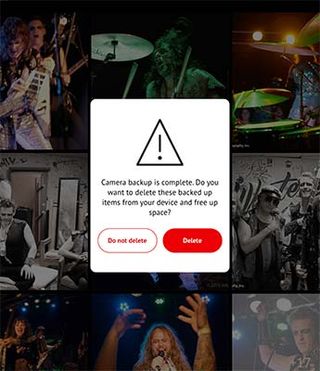
If you choose to keep the originals files, the iXpand Sync app will send persistent prompts to delete them. We saw these messages, very annoyingly, every 5 minutes.
Performance
On my tests, the iXpand took a little more than a minute to move a half-gigabyte bundle of 114 photos and eight captured videos from an iPad Pro. Sure, that sounds painless, but add full gigabytes to the load, and the time stacks up. An iPhone packed with 16GB of data could take a half hour to back up; a 64GB iPad could take 2 hours and serious change. In other words, when it comes to that first big data-haul, you'll be waiting around a bit. Luckily your iPhone or iPad is fully functional during backups.
Transfers to and from a PC via the USB 3.0 port were faster, as expected. I downloaded a 4K video file measuring 1.5GB from a nearby PC to the iXpand in a terse 33 seconds. That's about 45 MBps. On USBflashspeed.com's benchmark, the iXpand notched write speeds of around 45 MBps and read speeds of about 85 MBps. Both results are standard for 3.0 USB drives.
Special Features
Chief among the iXpand's perks are seamless automatic backups. The process is instant: Snap a picture with the drive connected, and a backup of the file is saved on the spot to the iXpand's drive. That goes ditto for any downloaded media files, contact information and files added to Facebook, Instagram and Picasa. However, there's no support for Twitter, Dropbox or Flickr.
And speaking of pictures, you can use the iXpand Sync app's internal camera to save pictures and video direct to the storage drive. That's a great feature if your iPhone or iPad's drive is packed wall-to-wall, with no room for new captures. You may, however, continue to stick with the native camera.
The in-app option lacks the capacity for HDR, square-photo, panorama, slow-motion-capture and time-lapse shooting modes that you'd find in the iOS camera app. iXpand's camera doesn't capture Apple's GIF-like Live Photos either, but it does go the extra mile to fully back up Live Photos captured in the native camera app, whimsical motions and all.
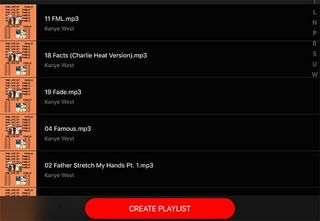
The playlist mode for music apps might be more useful. The iXpand makes it simple to gather music files and DRM-free iTunes files into a list. Without that feature, DJs can't cue up tracks flung across multiple albums, artists and file folders without performing tedious hunting-and-pecking through their digital media.
SanDisk purports that iXpand can handle in-app playback of video files, but our experience here was less satisfying. During an episode of The Flash, we watched on an iPad Pro as the superhero sped through his home turf, but we couldn't hear the wind as he ran or the sound of his voice. In fact, we couldn't hear anything at all. The iXpand's current firmware, as CNET discovered, doesn't support AC3 or DTS audio encoding. It's too bad those codecs exist on a large swath of downloaded, DRM-free video files.
If a video is DRM-protected — as are the files available via services like Amazon Video or iTunes — the iXpand can't play that media either. In other words, while you can store independently downloaded videos, you won't be able to watch them within the iXpand app, which SanDisk says you can do. The company declined to say if it has plans for a firmware update to fix the problem.
Encryption
Fans of encryption will appreciate that the iXpand lets you lock files behind a password (after which they are encrypted). When the iXpand is connected to a computer, the encrypted files reside in a locked folder to be opened and de-encrypted only with the proper password.
Bottom Line
The iXpand isn't a bad portable garage. Sure, there are some video files the app can't play back, but at least you can lock the garage door to protect other important data. The ability to add stand-alone music files with your DRM-free iTunes files is a plus, too.

If you have a payload of content that exceeds 128GB, you may want to consider a larger backup alternative, but the iXpand is a good option for odds and ends. Why? Its speedy automatic backups alone will save you time and storage-related headaches.
